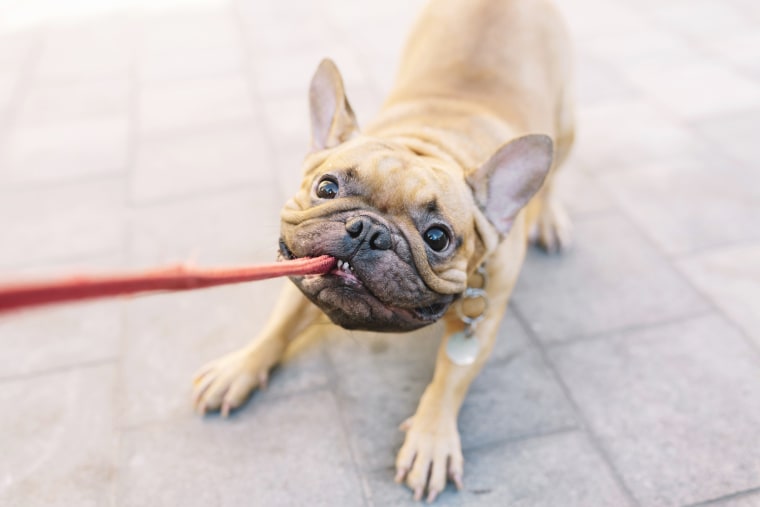Introduction: Understanding the Challenge of Leash Pulling
Walking your dog should be an enjoyable experience for both you and your furry friend. However, leash pulling can turn a pleasant stroll into a frustrating ordeal. In this comprehensive guide, we’ll explore expert tips and techniques to help you prevent your dog from pulling on the leash, fostering better behavior and strengthening your bond.
Understanding the Behavior: Why Dogs Pull on the Leash
Before addressing leash pulling, it’s essential to understand why dogs exhibit this behavior. Several factors contribute to leash pulling, including:
- Natural Instincts: Dogs are naturally inclined to explore their surroundings and investigate interesting scents, often leading them to pull on the leash to reach their desired destination.
- Lack of Training: Dogs may pull on the leash due to a lack of proper training and reinforcement of loose leash walking behavior.
- Excitement or Anxiety: Dogs may become excited or anxious while on a walk, leading them to pull on the leash in anticipation or as a response to stimuli in their environment.
- Physical Discomfort: Pain or discomfort, such as from an ill-fitting collar or harness, can cause dogs to pull on the leash in an attempt to alleviate discomfort.
Training Techniques: Teaching Your Dog to Walk Nicely on a Leash
Effective training is key to preventing leash pulling and promoting good walking manners in your dog. Consider the following techniques to teach your dog to walk nicely on a leash:
- Start Early: Begin leash training as early as possible, ideally when your dog is still a puppy. This allows you to establish good habits from the outset.
- Use Positive Reinforcement: Reward your dog with treats, praise, or toys for walking calmly on a loose leash. Positive reinforcement encourages desired behavior and strengthens the bond between you and your dog.
- Practice Patience: Be patient and consistent in your training efforts. Rome wasn’t built in a day, and teaching your dog to walk politely on a leash may take time and repetition.
- Employ the “Stop and Go” Method: When your dog starts to pull on the leash, stop walking and wait for them to come back to your side. Once they do, resume walking. This teaches your dog that pulling on the leash leads to a halt in forward progress.
Equipment Essentials: Choosing the Right Gear
The proper equipment can play a significant role in preventing leash pulling and ensuring a comfortable walking experience for both you and your dog. Here are some essential pieces of equipment to consider:
- Harnesses: Front-clip harnesses or no-pull harnesses are designed to discourage leash pulling by redirecting your dog’s attention back to you. Avoid using retractable leashes, as they can encourage pulling behavior.
- Flat Collars: Flat collars with buckles or snap closures are suitable for dogs who walk calmly on a leash without pulling. However, they may not be ideal for strong pullers or dogs prone to tracheal damage.
- Head Halters: Head halters, such as the Gentle Leader or Halti, gently guide your dog’s head and redirect their attention when they pull on the leash. Proper fitting and gradual acclimation are essential when using head halters.
- Leash Length: Opt for a standard leash length (4 to 6 feet) to maintain control and communication with your dog while walking. Longer leashes can make it more challenging to prevent leash pulling.

Consistency is Key: Maintaining Good Walking Habits
Consistency is crucial when it comes to preventing leash pulling and reinforcing good walking habits in your dog. Here are some tips for maintaining consistency in your training:
- Set Clear Expectations: Clearly communicate your expectations to your dog during walks. Use consistent commands and signals to reinforce desired behavior.
- Practice Regularly: Make daily walks a part of your routine to provide consistent opportunities for training and reinforcement.
- Remain Calm and Patient: Dogs are sensitive to their owner’s emotions, so it’s essential to remain calm and patient during walks, even if your dog becomes excited or distracted.
- Address Challenges Promptly: If your dog begins to exhibit leash pulling behavior, address it promptly with appropriate training techniques. Consistent correction and reinforcement are key to modifying behavior effectively.
Beyond Basic Training: Seeking Professional Assistance
If you’re struggling to prevent leash pulling despite your best efforts, don’t hesitate to seek professional assistance from a certified dog trainer or behaviorist. These experts can provide personalized guidance and training techniques tailored to your dog’s specific needs.
Conclusion: Enjoying Stress-Free Walks with Your Pup
In conclusion, preventing leash pulling requires patience, consistency, and effective training techniques. By understanding the underlying reasons for leash pulling, employing positive reinforcement, choosing the right equipment, and maintaining consistency in your training efforts, you can enjoy stress-free walks with your furry companion. Remember that each dog is unique, so be patient and adaptable in your approach, and celebrate small victories along the way. With dedication and perseverance, you can teach your dog to walk politely on a leash, strengthening your bond and enhancing your shared adventures outdoors.









